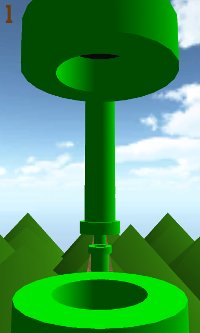100 flowers: Getting into the creative mood

Let’s continue with the series of tips for making games.
Today I want to talk about creativity, this elusive lover. I’m going to spare you going through a paragraph talking about confronting a white sheet, and blah blah blah. Let’s go straight to the point: Creativity can be trained, and there are techniques to make your creativity wheels start turning. Today I want to tell you about one of those techniques:
The one hundred flowers technique
This simple exercise can teach you a lot about how creativity works (but please don’t just read about it; Take your time to actually do it). It is quite simple. Grab a piece of paper, a pencil, and draw one hundred flowers. They don’t have to be fancy; take a minute as much for each flower. But you have to draw them one by one, and they need to be different.
After a while you’ll get stuck. But keep going! Soon you’ll start drawing crazy things, out of necessity, and the exercise will began to feel much easier! When you are done, look back to your work. You will be surprised of the result.
You can use this technique to train your creativity, or to wake up your mind a day that you feel that your imagination has left your head for a walk. It does not need to be flowers, it can be, let’s say, robots. But if you prefer robots to flowers, maybe it is better to challenge yourself with the flowers. You can also change the topic from session to session.
So, you are designing a game…
…but today you don’t come up with anything? If you have tried the hundred flowers method before, you can use the same technique here. Grab a piece of paper and a pencil, and draw a hundred characters, or levels, or game ideas… whatever you are stuck with.
The trick here, and the difference to what you are trying to do but don’t quite work, is to make it fast. Don’t bother to make it coherent, do not stop on details, just sketch an idea and get to the next one. Remember, you need to make a hundred!
When you are done, you’ll have a game. I promise you that.


